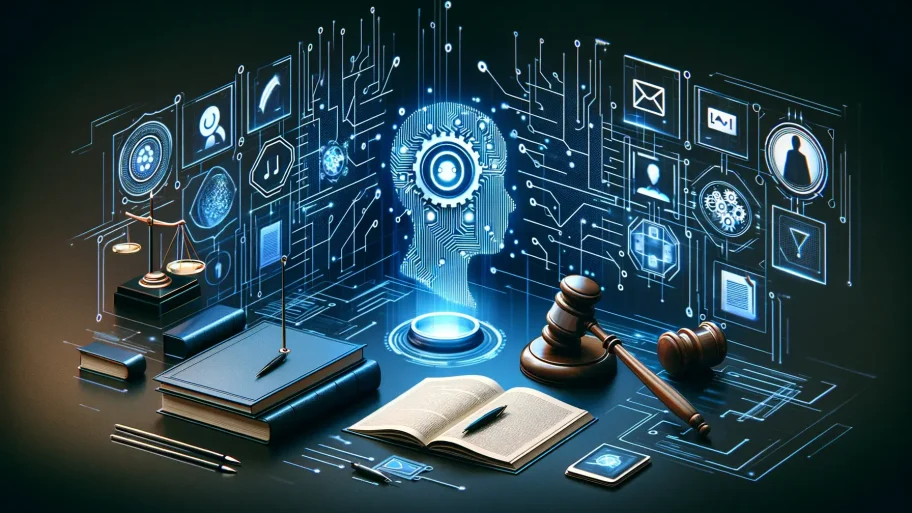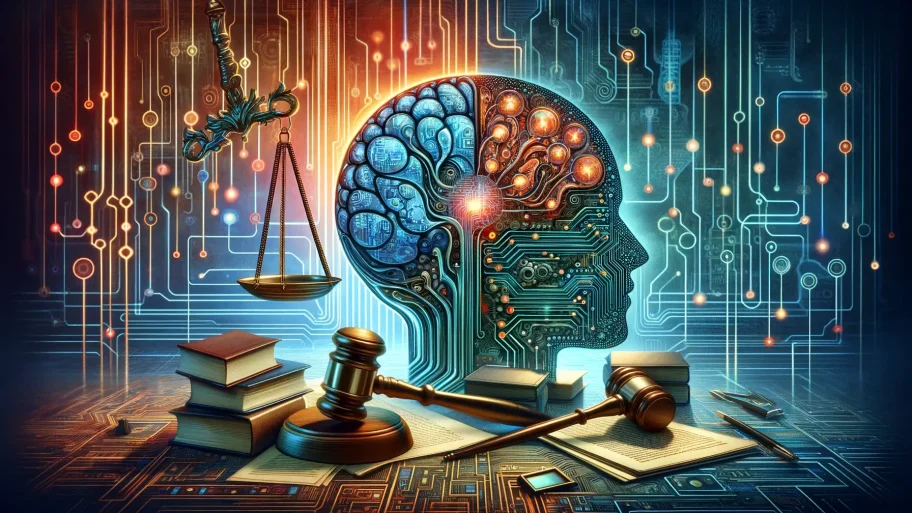Top 5 AI Use Cases In Legal Chatbots
- By Matt

Attention Legal Professionals and Industry Leaders!
Facing inefficient client interactions, mounting workloads, and compliance issues are not distant threats but imminent realities for those who fail to integrate AI into their legal practices now.
In this article, we’ll reveal how AI chatbots can transform legal operations, helping you avoid these pressing challenges.
Key Takeaways
- Client Interaction Automation frees up human lawyers for more complex tasks.
- Basic Legal Advice Automation provides clients with preliminary legal advice efficiently.
- Document Drafting Automation streamlines the creation of basic legal documents.
- Case Management Assistance helps lawyers track progress and manage deadlines.
- Lead Generation Automation identifies and engages potential clients effectively.
Use Case #5: Lead Generation Automation
Starting our countdown at number 5 is the transformative application of AI in lead generation, a crucial process for engaging potential clients effectively.
The Struggle with Traditional Lead Generation
Traditional lead generation methods can be time-consuming and inefficient, often resulting in missed opportunities. Manual processes make it challenging to engage potential clients promptly and accurately.
This inefficiency in lead generation adds stress to managing client acquisition, making it difficult to maintain a steady inflow of clients.
Impacts of Inefficient Lead Generation
- Missed business opportunities
- Inconsistent client acquisition
- Increased workload for lawyers
- Lower firm growth
How AI Enhances Lead Generation
AI-driven chatbots automate the initial contact with potential clients, qualifying leads through smart interactions and ensuring timely follow-ups. This approach ensures that no opportunity is missed and that potential clients are engaged effectively.
Implementing AI for lead generation improves client acquisition efficiency, allowing legal firms to grow steadily.
Table 1: Key Benefits of AI-Powered Lead Generation
| Benefit | Description |
|---|---|
| Enhanced Client Engagement | Automated interactions ensure timely and accurate engagement |
| Consistent Lead Qualification | Smart algorithms qualify leads efficiently |
| Increased Efficiency | Reduces the workload on human lawyers |
| Business Growth | Steady client acquisition supports firm growth |
Table 1 highlights the significant benefits of implementing AI-powered lead generation within legal practices.
The Evolution of Lead Generation
AI-powered lead generation transforms client acquisition by leveraging smart algorithms to ensure consistent engagement and qualification of potential clients. This proactive approach minimizes missed opportunities and optimizes the growth potential of legal firms.
As AI technology continues to evolve, lead generation systems will become even more sophisticated, further enhancing client acquisition efficiency.
Use Case #4: Case Management Assistance
Using AI for case management provides lawyers with tools to track progress, manage deadlines, and ensure no detail is overlooked.
The Complexity of Case Management
Managing legal cases involves numerous details and strict deadlines. Traditional methods can be cumbersome and error-prone, leading to missed deadlines and overlooked information.
This complexity in case management adds stress to legal operations, impacting overall efficiency and client satisfaction.
Challenges in Case Management
- Missed deadlines
- Overlooked details
- Increased workload
- Lower client satisfaction
AI-Driven Case Management
AI-driven case management tools use algorithms to track deadlines, send reminders, and organize case details. This ensures that all critical information is managed effectively and deadlines are met consistently.
Implementing AI for case management enhances organizational efficiency, reduces the risk of missed deadlines, and improves client satisfaction.
Table 2: Key Benefits of AI-Driven Case Management
| Benefit | Description |
|---|---|
| Accurate Tracking | Ensures deadlines are met and details are not overlooked |
| Reduced Workload | Automation decreases manual case management tasks |
| Improved Efficiency | Streamlined processes enhance operational efficiency |
| Enhanced Client Satisfaction | Reliable case management improves client trust and satisfaction |
Table 2 outlines the benefits of AI-driven case management for legal practices.
The Advancement of Case Management
AI-driven case management addresses the complexities and inefficiencies in traditional methods, ensuring reliable and efficient case handling. This technology minimizes errors and optimizes operations, enhancing client satisfaction and overall productivity.
As AI continues to advance, case management systems will become even more precise, further reducing the risk of errors and missed deadlines.
Use Case #3: Document Drafting Automation
Implementing AI in document drafting automates the creation of basic legal documents, reducing time and improving accuracy.
The Burden of Manual Document Drafting
Drafting legal documents manually is time-consuming and prone to errors. Lawyers spend significant time on routine documentation, which could be utilized for more complex tasks.
This burden of manual drafting adds stress to legal operations, reducing overall efficiency and increasing the likelihood of errors.
Challenges in Document Drafting
- Time-consuming processes
- Increased likelihood of errors
- Reduced efficiency
- Higher operational costs
AI-Enhanced Document Drafting
AI-powered chatbots generate basic legal documents and contracts automatically. This ensures accuracy and consistency while freeing up lawyers to focus on more critical tasks.
Implementing AI for document drafting improves efficiency, reduces errors, and lowers operational costs.
Table 3: Key Benefits of AI-Enhanced Document Drafting
| Benefit | Description |
|---|---|
| Time Savings | Automated drafting reduces time spent on documentation |
| Increased Accuracy | Consistent and error-free document generation |
| Cost Reduction | Less time spent on routine tasks lowers costs |
| Enhanced Efficiency | Streamlined processes improve overall operational efficiency |
Table 3 highlights the benefits of implementing AI-enhanced document drafting within legal practices.
Revolutionizing Document Drafting
AI-powered document drafting transforms the way legal documents are created, ensuring accuracy and consistency while freeing up valuable time for lawyers. This approach minimizes errors and optimizes efficiency in legal operations.
As AI continues to evolve, document drafting systems will become even more efficient, further reducing the time and costs associated with legal documentation.
Use Case #2: Basic Legal Advice Automation
Integrating AI into legal advice processes provides clients with preliminary advice efficiently, enhancing client satisfaction and reducing lawyer workloads.
The Demand for Quick Legal Advice
Clients often need quick answers to common legal questions. Traditional methods of providing this advice can be slow and inefficient, leading to dissatisfaction and increased workloads for lawyers.
This demand for quick legal advice adds stress to legal operations, impacting overall efficiency and client satisfaction.
Challenges in Providing Legal Advice
- Slow response times
- Increased lawyer workloads
- Client dissatisfaction
- Operational inefficiencies
AI chatbots provide preliminary legal advice based on frequently asked questions and common legal issues. This ensures that clients receive quick and accurate responses, reducing the burden on human lawyers. Implementing AI for basic legal advice improves client satisfaction, reduces workloads, and enhances operational efficiency. Table 4 outlines the benefits of AI-driven legal advice in legal practices. AI-driven legal advice transforms client interactions by providing quick and accurate responses to common questions. This technology reduces the workload on human lawyers and enhances client satisfaction. As AI continues to advance, legal advice systems will become even more sophisticated, further improving response times and accuracy. Leveraging AI for client interaction automation revolutionizes how legal firms handle initial client inquiries, freeing up human lawyers for more complex tasks. Handling initial client inquiries manually is time-consuming and can overwhelm legal professionals. This manual process impacts overall efficiency and client satisfaction. Without an automated solution, managing client interactions adds significant stress to legal operations, reducing the time available for more complex tasks. AI-powered chatbots handle initial client inquiries, providing relevant information and collecting necessary details through automated interactions. This ensures that clients receive timely and accurate responses, freeing up human lawyers for more complex tasks. Implementing AI for client interaction improves efficiency, reduces workloads, and enhances client satisfaction. Table 5 highlights the significant benefits of implementing client interaction automation in legal practices. Client interaction automation transforms how legal firms manage initial inquiries, ensuring timely and accurate responses while freeing up lawyers for more complex tasks. This approach minimizes workload and maximizes efficiency. As AI technology continues to evolve, client interaction systems will become even more efficient, further enhancing client satisfaction and reducing operational costs. In the rapidly evolving legal industry, inefficiencies, increased workloads, and rising costs are significant challenges for your practice. Neglecting to integrate these technologies means missing out on opportunities for increased efficiency, cost savings, and enhanced client satisfaction.Table 4: Key Benefits of AI-Driven Legal Advice
Benefit
Description
Quick Responses
Clients receive timely answers to common questions
Workload Reduction
Less routine advice provided by human lawyers
Enhanced Efficiency
Streamlined advice processes improve operational efficiency
Improved Satisfaction
Clients appreciate quick and accurate responses
The Evolution of Legal Advice
Use Case #1: Client Interaction Automation
The Stress of Manual Client Interactions
Impacts of Manual Client Interactions
How AI Enhances Client Interaction
Table 5: Key Benefits of Client Interaction Automation
Benefit
Description
Increased Efficiency
Automated interactions reduce time spent on routine inquiries
Workload Reduction
Lawyers can focus on more complex tasks
Enhanced Satisfaction
Clients appreciate quick and accurate responses
Cost Savings
Reduced operational costs with automated interactions
Transforming Client Interactions
Conclusion
Latest Posts
- By Matt | 1 year ago
- By Matt | 2 years ago
- By Matt | 2 years ago
- By Matt | 2 years ago
- By Matt | 2 years ago
- By Matt | 2 years ago
- By Matt | 2 years ago
There are no results matching your search
Trending
There are no results matching your search






